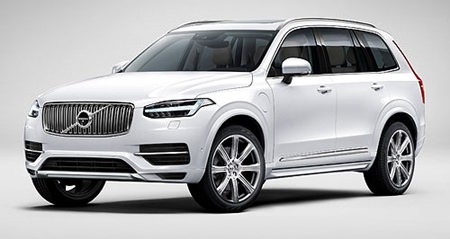Volvo has been having a tough time over the past 15 years. The Volvo Car Corporation was sold to Ford Motor Company for $6.45 billion during 2000, and Ford placed it within the Premier Automotive Group alongside Jaguar, Land Rover and Aston Martin. Volvo engineering resources and components would be used in various Ford, Land Rover and Aston Martin products, with the second generation Land Rover Freelander designed on the same platform as the second generation Volvo S80. The Volvo T5 petrol engine was used in the Ford Focus ST and RS performance models, and Volvo’s satellite navigation system was used on certain Aston Martin Vanquish, DB9 and V8 Vantage models. However, it did not make a profit for Ford and in 2010 Ford sold the Volvo Car Corporation to Geely Automobile of China for $1.8 billion, following on from their sale of Jaguar Land Rover in 2008 and Aston Martin in 2007. Hardly a success story for Ford, losing $4.65 billion in 10 years.
However, Geely are trying very hard to get Volvo back up as a major player in the automotive market. Volvo Car Group president and CEO Hakan Samuelsson said the launch of the new XC90 is a significant day in the Swedish car-maker’s 87 year history, marking a turning point for the brand. “This is one of the most important days in our history,” he said. “We are not just launching a car, but re-launching our brand. This day marks a new era for our company. The XC90 paves the way for a portfolio of exciting new cars to come in the following years.”
 Volvo XC90
Volvo XC90
They certainly are pinning their hopes on this car (SUV, sorry) to raise Volvo from the doldrums.
Volvo has built up an enviable history in safety, both active and passive. Volvo says that the XC90 ushers in two world firsts – a “run-off road” protection package and an “autobrake at intersection” functionality.
The run-off safety package detects the vehicle running off the road and tightens the seatbelts to keep occupants in the safest position, while energy-absorbing functionality between the seats and seat frames softens the forces when the vehicle has a hard landing.
The automatic braking system activates if the driver turns in front of an oncoming car. This system will fall under Volvo’s City Safety banner that has all automatic braking functions, such as pedestrian and cyclist detection in day and night time, that will be standard across the XC90 range.
Mind you, has Volvo tried this out with Thai motorcycles I wonder?
Volvo (Geely) reports that it is very serious about building the XC90 as a new model, with a $10 billion development program. To be publically revealed at the Paris motor show in October, the new XC90 is the first Volvo production vehicle to incorporate its new design language as previewed by concepts such as the XC Coupe at this year’s Geneva motor show.
The second-generation XC90 will mark the first use of Volvo’s flexible Scalable Product Architecture (SPA) that will underpin a number of its future models, including next-gen versions of the S60/V60 mid-sizer and the XC60 compact SUV.
Volvo Car Group senior vice president of research and development Peter Mertens said SPA had allowed the company to produce an SUV that combined space, versatility and efficiency. “SPA has enabled us to create the world’s first SUV without compromises,” he said. “You get the in-command feel, generous interior space and flexible capability combined with the agility and smooth comfort of a much smaller and lower car. The adrenaline rush that is key to true driving pleasure is delivered by powertrains that offer an unrivalled combination of power and clean operation. And since the XC90 carries the Volvo badge, world-class safety is standard.” (All good PR-speak.)
With powertrains, the XC90 offers a 2.0 liter four-cylinder Drive-E powertrains, including a range-topping plug-in hybrid, known as the Twin Engine.
The hybrid powertrain uses a 2.0 liter four-cylinder supercharged and turbocharged petrol engine matched with an electric motor, offering a combined output of about 300 kW and expected carbon dioxide emissions of 60 g/km (if you are interested in emissions).
Volvo’s plug-in will join a growing number of hybrid-powered large premium SUVs, including the Lexus RX450h, BMW’s mooted X5 eDrive, and the Range Rover diesel-electric hybrid.




